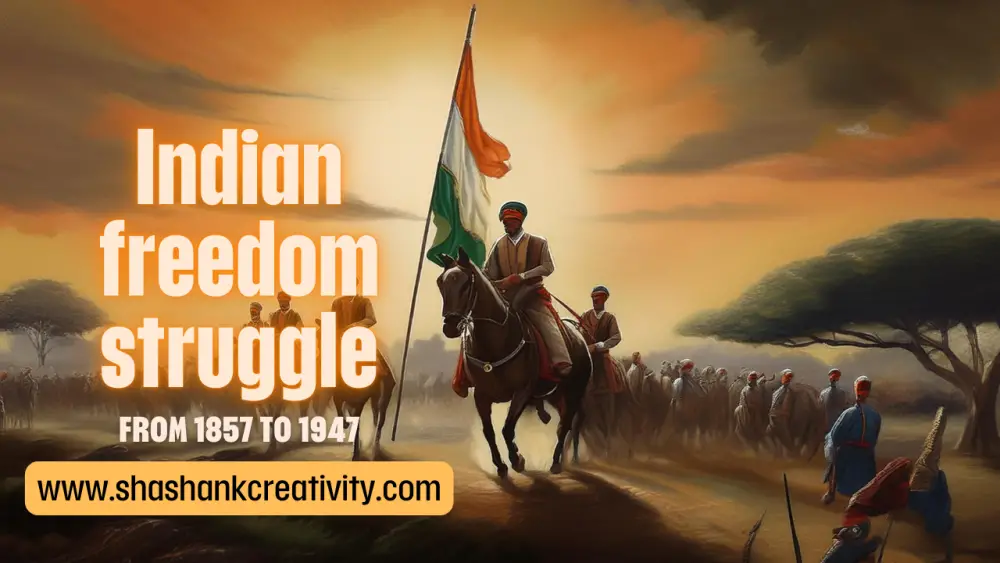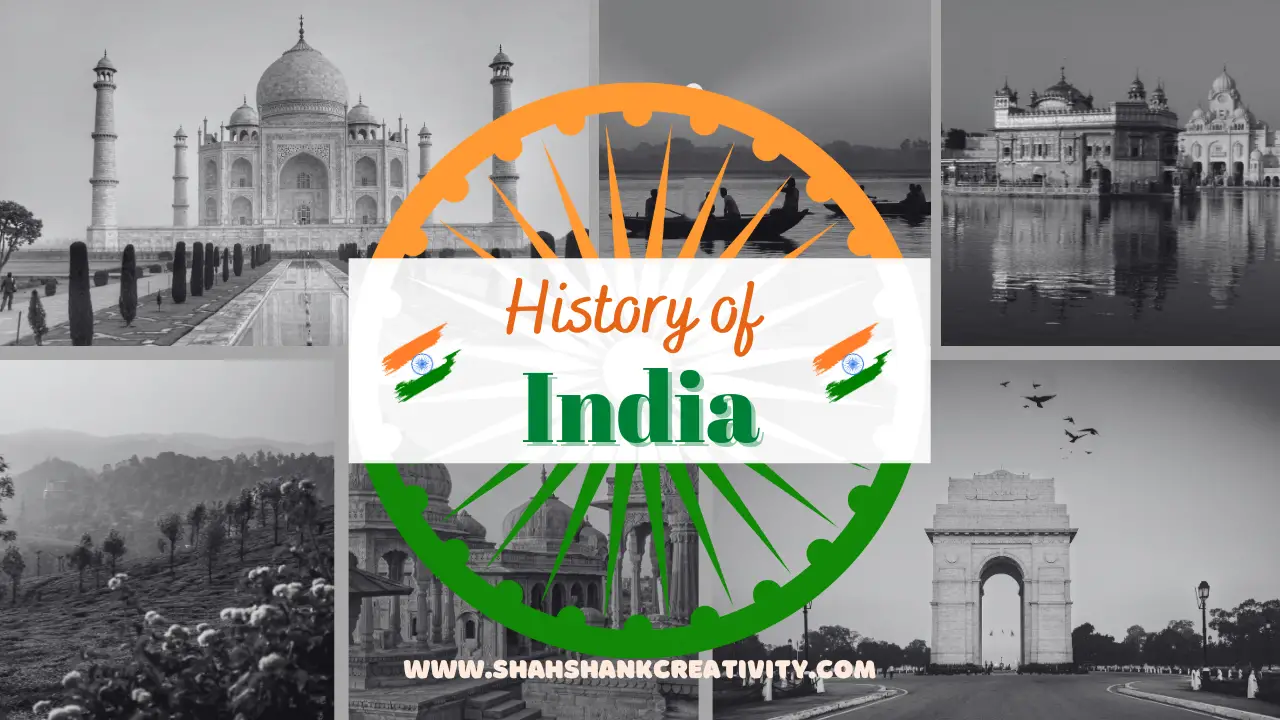Indian Freedom struggle from 1857 to 1947

Indian Freedom struggle from 1857 to 1947
Indian Rebellion of 1857
The Indian Rebellion of 1857 was a major uprising in India against the rule of the British East India Company. The rebellion was sparked by the introduction of new cartridges for the Enfield rifle, which were rumored to be greased with cow and pig fat. This was seen as an insult to both Hindus and Muslims, and many soldiers refused to use the cartridges. The rebellion began on May 10, 1857, when a group of sepoys (Indian soldiers) in Meerut mutinied. The mutiny quickly spread to other parts of India, and by the end of the year, the British had lost control of most of the country. The rebellion was eventually put down by the British, but it had a profound impact on the course of Indian history. It led to the end of the East India Company's rule in India, and it helped to pave the way for the independence movement.
Foundation of Indian National Congress
The Indian National Congress was founded in 1885 by a group of British-educated Indians who were inspired by the ideals of the British liberal tradition. The Congress's early leaders were moderates who believed that India could achieve self-government through cooperation with the British. However, by the early 20th century, the Congress had become a more radical organization, led by figures such as Mahatma Gandhi and Jawaharlal Nehru. The Congress led a series of mass movements against British rule, including the Swadeshi Movement, the Non-Cooperation Movement, the Civil Disobedience Movement, and the Quit India Movement. These movements culminated in India's independence in 1947.
Swadeshi Movement
The Swadeshi Movement was a period of intense nationalist sentiment in India that began in 1905. The movement was a response to the British government's decision to partition Bengal, which was seen as a way to divide and rule the country. The Swadeshi Movement called for a boycott of British goods and the promotion of Indian-made goods. The movement was also marked by a series of strikes and protests. The Swadeshi Movement was a significant turning point in the Indian independence movement, and it helped to lay the groundwork for the later Non-Cooperation Movement and the Civil Disobedience Movement.
Non-Cooperation Movement
The Non-Cooperation Movement was a mass movement launched by Mahatma Gandhi in 1920. The movement was a response to the Rowlatt Act, which gave the British government sweeping powers to suppress dissent. The movement called for a boycott of British goods, institutions, and titles. It also called for civil disobedience, including non-payment of taxes and non-cooperation with the British government. The movement was successful in mobilizing millions of Indians, but it was eventually called off by Gandhi in 1922 after the Chauri Chaura incident.
Civil Disobedience Movement
The Civil Disobedience Movement was a mass movement launched by Mahatma Gandhi in 1930 to protest against the British rule in India. The movement was launched in response to the British government's decision to impose the salt tax. The salt tax was a regressive tax that was levied on all salt produced or sold in India. The tax was particularly burdensome for the poor, who relied on salt as a basic necessity.
The Civil Disobedience Movement was a nonviolent movement that called for the people of India to refuse to cooperate with the British government. The movement called for the people to boycott British goods, institutions, and laws. The movement also called for the people to engage in civil disobedience, such as refusing to pay taxes or to follow British laws.
The Civil Disobedience Movement was a major turning point in the Indian freedom struggle. The movement mobilized millions of people across India and brought the issue of Indian independence to the forefront of the world stage. The movement also helped to strengthen the resolve of the Indian people to fight for their independence.
The Civil Disobedience Movement was a success in many ways. The movement forced the British government to make concessions, such as the release of political prisoners and the repeal of the salt tax. The movement also helped to raise awareness of the Indian freedom struggle around the world.
However, the Civil Disobedience Movement was also a failure in some ways. The movement did not lead to the immediate independence of India. The movement also led to violence and unrest in some parts of India.
Despite its shortcomings, the Civil Disobedience Movement was a major milestone in the Indian freedom struggle. The movement helped to mobilize millions of people and to bring the issue of Indian independence to the forefront of the world stage. The movement also helped to strengthen the resolve of the Indian people to fight for their independence.
Quit India Movement
The Quit India Movement was a mass movement launched by the Indian National Congress on August 9, 1942, in response to the failure of the Cripps Mission. The movement called for the immediate and unconditional withdrawal of British rule from India. The movement was led by Mahatma Gandhi and other Congress leaders. The movement was met with widespread repression by the British authorities, and many people were arrested and imprisoned. The movement also led to widespread violence and destruction of property. The Quit India Movement is considered to be one of the most important events in the Indian freedom struggle.





